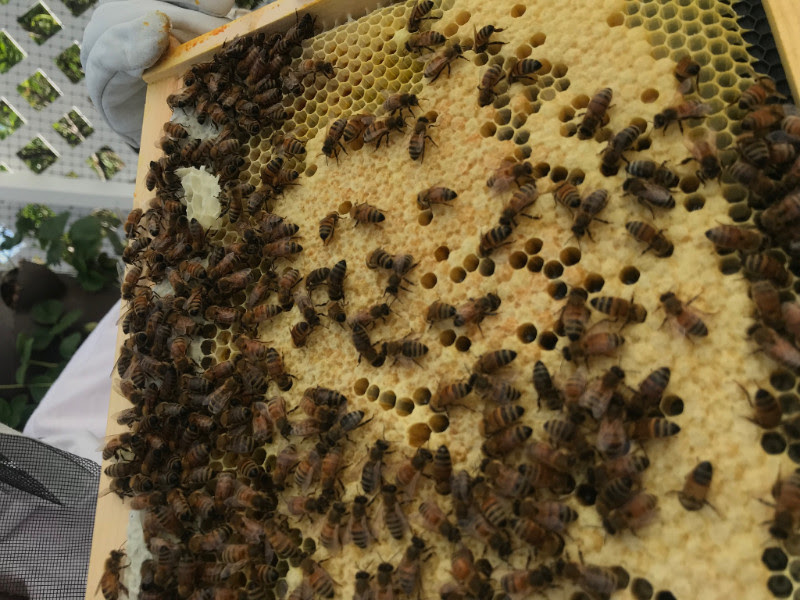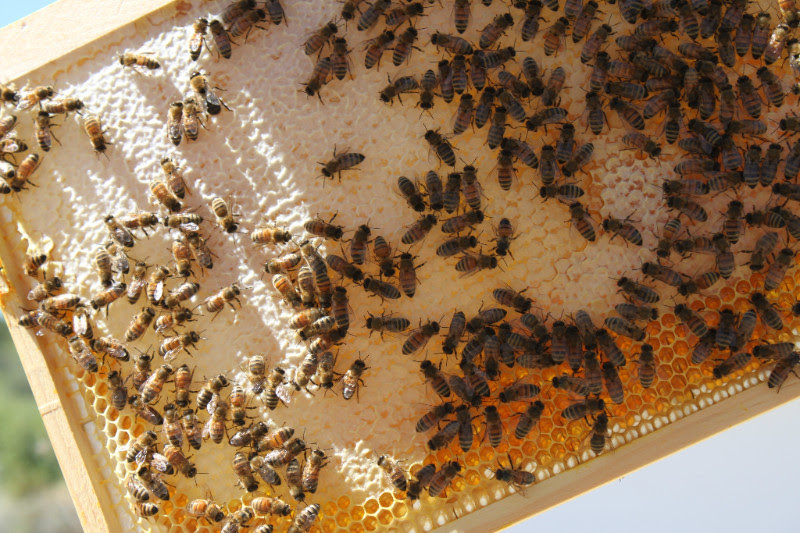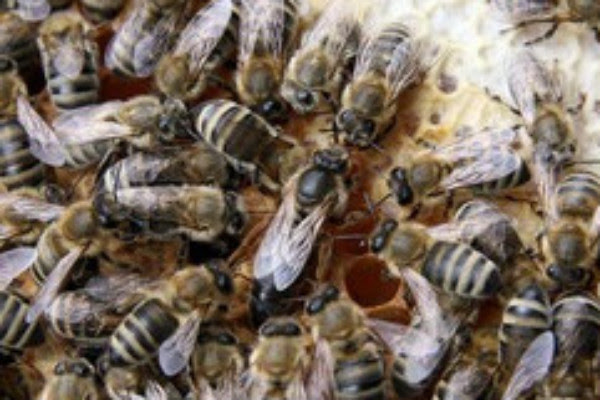I must admit, I have a terrible weakness as a beekeeper. I can never give up. I see my girls trying their best to overcome some hurdle, and I want to help. After all, they haven’t given up.But, aside from ridiculous empathy for my bees, why put time and effort into a (usually) losing battle? Because I learn so much about the bees, about the problem, and often, about other problems that can be solved if only we know the solution. The risk as stated by one of my mentors when I told him what I was doing this week, “sounds like you are going to mess both colonies up”. So, before starting down the rocky road, asses your skill level and ask truthfully how likely you are to make one problem into two, or make the initial problem worse.
This particular adventure started with the solar eclipse last August, the bee-clipse, as it has been dubbed. I discovered swarm cells in one of my colonies right before the eclipse. I also found the old queen. I pulled her and 4 frames of bees and brood, with no queen cells out into a nuc. My thinking was that there was a high probability that the new queen would not mate properly, or would not return from mating at all, I would return the old queen and bees to the hive, and we would go on preparing for winter. Another mentor laughed and said they were supercedure cells, and just wait and see. “Ha! I know the difference between supercedure and swarm cells”, I thought. Oddly, the old queen did not resume laying in her new digs for two weeks. When she finally did lay some eggs, the bees started supercedure cells. The queen did not lay well at all, but only a small patch of brood. Arghhh!
The bees must have killed the old queen, or she died, and neither new queen returned from mating flights. I re-combined the hives. So, now in mid-September I find I have a queenless colony. A friend has the same situation playing out in one of her hives, she says she’ll give me the old queen if her new one mates. We wait. In the meantime, some of my workers begin to lay. This means they will likely kill an introduced queen. The situation is becoming worse every day. Standard advice for a laying worker colony is not to bother with it. Shake the bees out onto the ground in the apiary, remove their hive so there is no home to come home to, and they will assimilate and be nice where ever they are allowed in. Alternatively, I have heard that you can just combine them all with a strong colony, but I have never been brave enough to risk a good queen that way.
Finally in October, my friend sees eggs from her newly mated queen, and gives me her old girl. I learned a trick from Ross Conrad this summer about getting acceptance, and I had successfully used it in a colony that had killed 4 queens. (Messing around in a hopeless situation, that turned out not to be hopeless). I sprayed all the bees with a 4x concentration of Honey B Healthy and 1:1 sugar water and installed the queen in her cage without attendants, waited 3 days, sprayed them all again, including the queen, and direct released her. Ross says he has never gone the extra step and direct releases the queen immediately. I always add a sheet of capped brood along with the queen in a situation like this to help normalize the pheromones in the hive. This trick worked here as well, and in October, the colony accepted my friend’s queen, but though she had been laying well previously, she did not lay any eggs in her new home. There were plenty of old bees, but no fat bees to live all the way through winter. This is just something new to watch and learn from.
Since it is a top bar hive, I can open it without chilling the entire brood chamber, which led me to discover this week that there was no brood chamber, but only about 200 bees and the queen remained alive. Another hopeless situation. I had nothing to lose by messing with them. Now we are up to where my mentor told me I would destroy both colonies. The only salvation I could imagine was to take brood and bees from my booming colony across the yard and donate them to my lonely queen. Stopping to assess the risk, I asked myself about the likelihood of accidentally moving the queen from the good colony along with the brood. I decided that I would only proceed if I actually found the queen and could keep her safe. I would hopefully give the struggling queen enough bees to cover a small brood chamber along with a few young and fat bees. Again, the Honey B Healthy trick saved the day. I sprayed all the bees and the queen and prayed a little prayer, and the new bees accepted the queen and her tiny retinue. It remains to be seen whether this will work, or whether I learned how not to make a light bulb, but either way, I win, because I will learn something. I’ll write and let you know what it is when I figure it out. T





